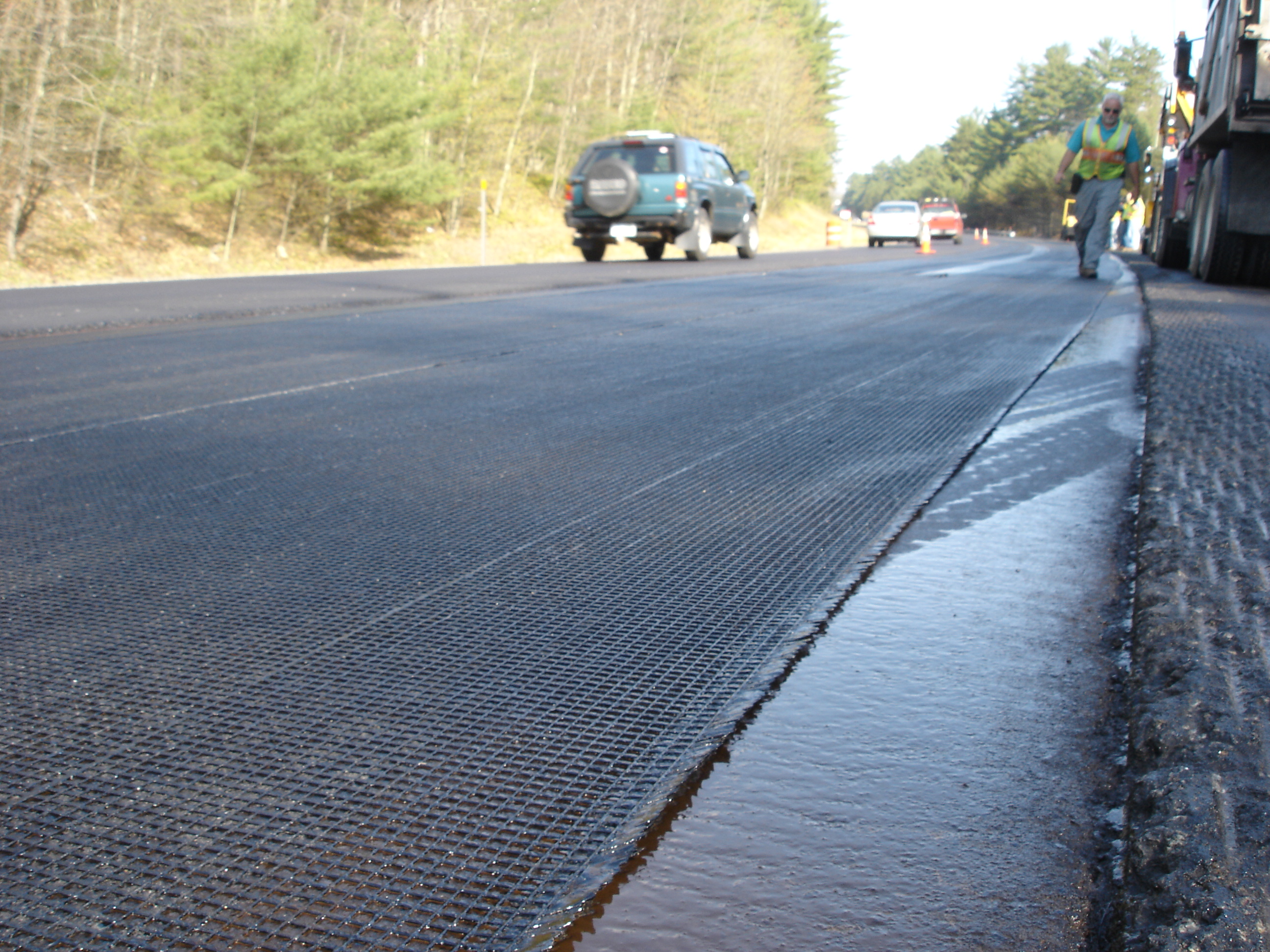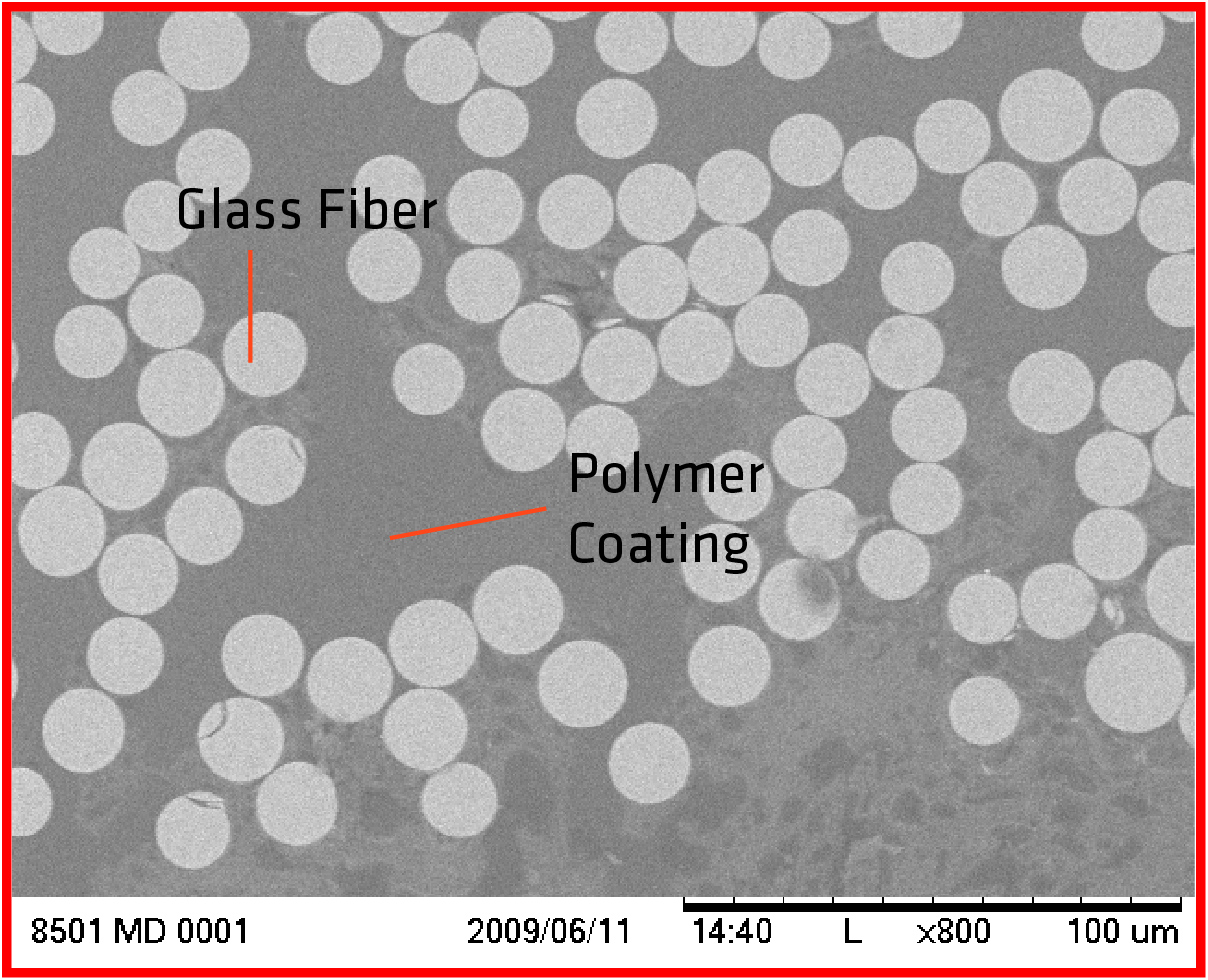Interlayers: Asphalt Coatings vs. Elastomeric Polymer Coatings
by Jeffrey Rasche, on August 06, 2020
In a pavement interlayer, a coating protects the fibers from mechanical and chemical damage during shipping, storage, installation and post construction. That same coating forms all of the strands into a unified fiberglass bundle that works together, ensuring the full engagement of these fibers in taking up the tensile strain simultaneously, while minimizing any strain movement. Finally, it also promotes a strong bond of the individual fibers contained within each bundle to the asphalt pavement layers.
Materials coated with asphalt during manufacturing will rapidly become oxidized, even before the material arrives at the job site prior to installation. As the coating layer is extremely thin, the oxidation will not be limited to just the surface of the coating, but rather the full depth of the coating. When oxidation occurs, the asphalt stiffens and becomes brittle, with significant loss of elasticity reducing the protective and bonding capabilities. Typically, asphalt coating involves a process that uses an asphalt emulsion as the coating. Emulsions contain a large proportion of water, which displaces the asphalt creating variable thicknesses of coating depth with microscopic voids in the coating. This negates the coatings effectiveness as a protection barrier.
Asphalt coated interlayers are ineffective because:
- They are prone to oxidation. An oxidized coating is unable to protect the fibers from mechanical and chemical damage, as the material is too brittle to provide this function.
- The ability to form a strong bond to asphalt is compromised.
- Asphalt coating typically involves a process that utilizes an asphalt emulsion formulation as the coating. These formulations contain a large proportion of water which displaces the bitumen.
- Voids remain behind following the curing of the emulsion resulting in variable thickness of the coating as well as, but not limited to, microscopic voids in the coating. This will diminish the effectiveness of the coating as a protection barrier.
ELASTOMERIC POLYMER COATED INTERLAYERS
An elastomeric polymer coating formulation that contains no asphalt is significantly more resistant to oxidation, as opposed to asphalt or a polymer modified asphalt coating.
There are countless variations to polymer formulations available, but only a few formulations are ideal for coating fiberglass paving interlayers. Saint-Gobain has over 40 years’ experience working with elastomeric polymer formulations to develop the best possible coatings for bonding with asphalt materials. This expertise has led to our ability to maximize the overall performance of high tensile reinforcing paving interlayers by coating them with our specialized high temperature, high performance elastomeric polymer coating formulation.
formulations are ideal for coating fiberglass paving interlayers. Saint-Gobain has over 40 years’ experience working with elastomeric polymer formulations to develop the best possible coatings for bonding with asphalt materials. This expertise has led to our ability to maximize the overall performance of high tensile reinforcing paving interlayers by coating them with our specialized high temperature, high performance elastomeric polymer coating formulation.
Benefits of Elastomeric Polymer Coatings:
- Maximize the bond of the GlasGrid family of products within the HMA pavement
- Protect the fibers with high temperature tolerant coating
- Coat the individual fibers located within the rib bundles so they work in unison.
- Form a stiffer reinforcing matrix which research has shown to improve performance in asphalt pavements.
_2.jpg) There is significant higher cost for the elastomeric polymer coating formulations used over an asphalt or polymer asphalt coating, but the added cost is justified because the higher performance delivered for the cost is a much better value.
There is significant higher cost for the elastomeric polymer coating formulations used over an asphalt or polymer asphalt coating, but the added cost is justified because the higher performance delivered for the cost is a much better value.
 Note: the majority of interlayers claiming to be bitumen coated use a low cost bitumen emulsion, where the material is simply dipped into a vat of asphalt emulsion. The images below show the penetration of the coating around each and every fiber of GlasGrid. This is not achievable using asphalt emulsion.
Note: the majority of interlayers claiming to be bitumen coated use a low cost bitumen emulsion, where the material is simply dipped into a vat of asphalt emulsion. The images below show the penetration of the coating around each and every fiber of GlasGrid. This is not achievable using asphalt emulsion.




